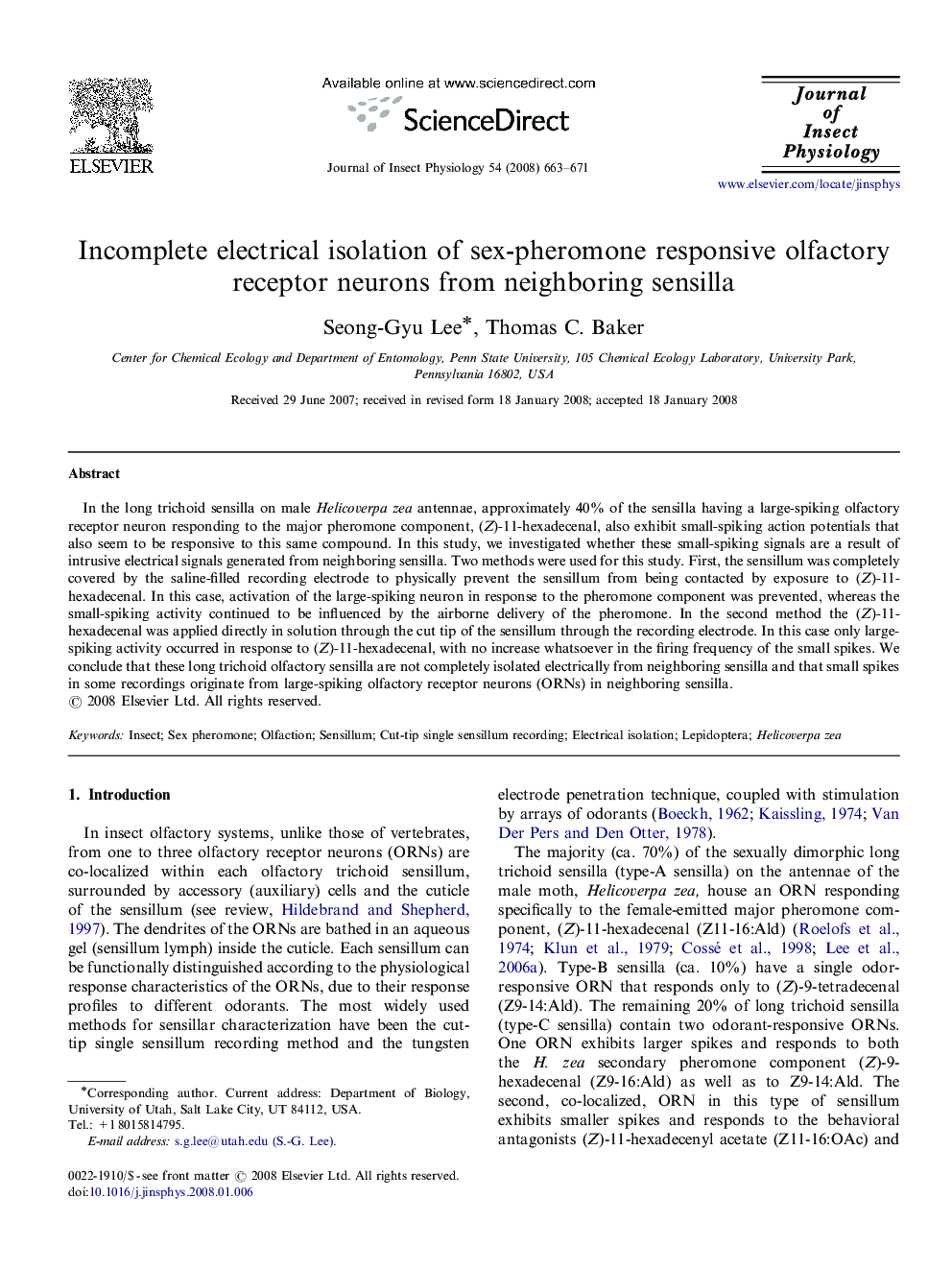| Article ID | Journal | Published Year | Pages | File Type |
|---|---|---|---|---|
| 2841396 | Journal of Insect Physiology | 2008 | 9 Pages |
In the long trichoid sensilla on male Helicoverpa zea antennae, approximately 40% of the sensilla having a large-spiking olfactory receptor neuron responding to the major pheromone component, (Z)-11-hexadecenal, also exhibit small-spiking action potentials that also seem to be responsive to this same compound. In this study, we investigated whether these small-spiking signals are a result of intrusive electrical signals generated from neighboring sensilla. Two methods were used for this study. First, the sensillum was completely covered by the saline-filled recording electrode to physically prevent the sensillum from being contacted by exposure to (Z)-11-hexadecenal. In this case, activation of the large-spiking neuron in response to the pheromone component was prevented, whereas the small-spiking activity continued to be influenced by the airborne delivery of the pheromone. In the second method the (Z)-11-hexadecenal was applied directly in solution through the cut tip of the sensillum through the recording electrode. In this case only large-spiking activity occurred in response to (Z)-11-hexadecenal, with no increase whatsoever in the firing frequency of the small spikes. We conclude that these long trichoid olfactory sensilla are not completely isolated electrically from neighboring sensilla and that small spikes in some recordings originate from large-spiking olfactory receptor neurons (ORNs) in neighboring sensilla.
